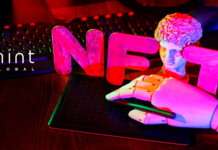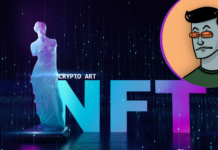
The Basics: a Blockchain for Distributed Content
TRON’s stated aim is to construct a global, decentralized, and free content and storage network. The idea is that through TRON, content creators will be able to store and publish content while exercising a high level of control over their content’s usage and monetization thanks to the transparency offered by the blockchain.
The advantages of this sort of system should be readily apparent in comparison with the current model. Let’s say, for example, that you take a photo and share it on Facebook. Once that photo’s posted online, you don’t have much control over who might download or repost it. It’s very possible that somebody could be using your photo to make money in an advertisement without you even knowing. But if you uploaded the same photo to TRON, you’d be able to truly “own” your photo thanks to the immutable blockchain ledger, which would permanently tie your content to you, the creator.

The TRON network will also allow content creators to raise money via ICOs so, for example, a game developer could finance the development of a promising game via fans and then publish the game on TRON’s distributed network, rather than having to rely on a publisher or third-party platform for funding and publishing.
TRON aims to offer advantages to content consumers, too. Particularly in the post-net-neutrality age, there’s a risk that the world’s biggest content companies (like Comcast) could try to cash in by prioritizing access to their own content over competitors’ content. But because content on the TRON network is decentralized and stored all over the network, content consumers wouldn’t have to fear that kind of access throttling.
It’s essentially a vision for an entirely new, distributed internet built on the principles of decentralization, freedom of information, and fair content ownership.

Proof of Repetition
The TRON blockchain operates using a unique consensus algorithm called Proof of Repetition or “PoRep” (rather than proof-of-work or proof-of-stake, which are used by most blockchain projects). PoRep is similar to proof-of-work, but rather than mining a currency through block creation, it measures how much of your storage space you’re contributing to the TRON network for distributed storage.
It’s far more energy-efficient than proof-of-work, but the results are similar: accounts are rewarded for the storage they contribute with a proportional amount of TRONIX ($TRX), TRON’s digital currency. TRX is also used to pay for entertainment on the TRON network, and that’s the system’s basic economy: you’re paid for your storage in TRX, and you spend TRX to consume content (like watching a video).
It gets a little more complicated, though, because in addition to spending TRX, users can also “lock in” their TRX. Locked-in TRX bestows a user with TRON Power (TP) proportionate to the amount of TRX they own and the length of time it’s locked in for. The more TP a TRON user has, the greater their voting rights on the TRON system, so in that sense TRON can be “staked” in a manner similar to a proof-of-stake coin.
A Bold But Unrealized Vision
TRON’s vision is incredibly broad and revolutionary, but if there’s a catch it’s that right now it’s just that: a vision. Right now, the company’s just focused on developing the data storage technology, and its roadmap for realizing the full vision extends all the way to the year 2027. Even the basics like content ownership and monetization aren’t likely to be ready until into the 2020s.
In other words: TRON has some exciting ideas, but right now they’re virtually all confined to the page. Aside from buying and trading $TRX there’s not much else you can do on the TRON network for the time being.
Such a slow development cycle obviously leaves TRON open to being beaten to the punch by a competitor, although with its massive market cap TRON has an obvious leg up at the moment against any incoming competition.

TRON’s leadership
TRON is helmed by CEO Justin Sun, an Ivy League grad, successful app founder, and former Ripple China representative. Sun has been lauded as one of the Forbes 30 under 30 Asia (Technology), and he also attended China’s prestigious “Hupan College” entrepreneur training program.
TRON itself is technically a nonprofit foundation, headquartered in Singapore and tasked with supporting the development and propagation of TRON. To support itself, the foundation holds more than 34 billion TRX which as of this writing is worth about $4.7 billion and accounts for around half of TRX’s total market cap, although those coins, Sun says, are locked up until at least 2020.
TRON in a Nutshell
- A “new internet” that offers distributed content storage and a better way of handling content publishing and consumption.
- Unique Proof-of-Repetition rewards users who offer storage.
- “TRON Power” staking system rewards users who hold TRX for extended periods.
- Promising-looking leadership and structure.
- Slow development roadmap.
- No real working product at the moment.
- Promising vision.



































